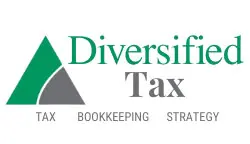Understanding Liabilities
Understanding Liabilities
As a business owner, understanding the concept of liabilities is crucial for maintaining a healthy financial standing and ensuring the long-term success of your enterprise. Liabilities, in the context of accounting, refer to the debts and obligations that a company has incurred, whether it’s outstanding bills, loans, or any other financial commitments. Mastering the intricacies of liabilities can empower you to make informed decisions, optimize your cash flow, and navigate the complexities of running a thriving business.
Defining Liabilities in Accounting
In the realm of accounting, liabilities are defined as any financial obligations that a company has incurred and is legally required to pay. These can range from short-term debts, such as accounts payable or accrued expenses, to long-term commitments, like mortgages, bonds, or pension obligations. Liabilities are a crucial component of a company’s balance sheet, providing a comprehensive snapshot of its financial standing.
The Accounting Equation
The fundamental accounting equation, which states that Assets = Liabilities + Equity, underscores the importance of liabilities in the financial landscape. This equation highlights the delicate balance between a company’s assets, the resources it controls, and the claims against those assets, which include both liabilities and the equity invested by owners or shareholders.
Distinguishing Current and Long-Term Liabilities
When examining a company’s liabilities, it is essential to differentiate between current and long-term liabilities. Current liabilities are obligations that are due within the next 12 months, such as accounts payable, short-term loans, or accrued taxes. Long-term liabilities, on the other hand, are debts that are not due for more than a year, including mortgages, bonds, or long-term lease payments.
Identifying Liabilities on the Balance Sheet
The balance sheet is the primary financial statement that provides a detailed account of a company’s liabilities. This document, which is divided into three main sections (assets, liabilities, and equity), allows businesses to clearly visualize their financial obligations and assess their overall financial health.
Navigating the Balance Sheet
Within the liabilities section of the balance sheet, you will find a comprehensive list of all the debts and obligations your company has incurred. This includes accounts payable, accrued expenses, short-term and long-term loans, and any other financial commitments. By carefully reviewing this section, you can gain valuable insights into your company’s liquidity, solvency, and debt management strategies.
Recognizing Common Liability Accounts
Some of the most common liability accounts that you may encounter on a balance sheet include:
- Accounts Payable: Monies owed to suppliers or vendors for goods or services received.
- Accrued Expenses: Expenses that have been incurred but not yet paid, such as salaries, utilities, or taxes.
- Unearned Revenue: Payments received from customers for goods or services that have not yet been delivered.
- Short-Term Loans: Borrowings that are due within the next 12 months.
- Long-Term Debt: Loans or other financial obligations that are not due for more than a year.
- Deferred Tax Liabilities: Taxes that have been accrued but not yet paid.
By understanding the composition of these liability accounts, you can gain a deeper appreciation for the financial obligations your business faces and develop strategies to manage them effectively.
Calculating and Analyzing Liabilities
To assess the overall financial health of your business, it is essential to calculate and analyze various liability-related ratios. These ratios provide valuable insights into your company’s debt levels, liquidity, and solvency, helping you make informed decisions and identify areas for improvement.
The Debt Ratio
The debt ratio is a fundamental metric that compares a company’s total liabilities to its total assets. This ratio is calculated by dividing the total liabilities by the total assets and is expressed as a percentage. A lower debt ratio indicates that a company is less leveraged and has a stronger financial position, while a higher ratio suggests a greater reliance on debt financing.
The debt ratio formula: Debt Ratio = Total Liabilities / Total Assets
The Long-Term Debt Ratio
The long-term debt ratio focuses specifically on a company’s long-term liabilities, excluding current liabilities. This metric provides insight into the proportion of a company’s assets that are financed by long-term debt. A lower long-term debt ratio is generally considered more favorable, as it suggests a stronger financial foundation and lower risk exposure.
The long-term debt ratio formula: Long-Term Debt Ratio = Long-Term Liabilities / Total Assets
The Debt-to-Equity Ratio
The debt-to-equity ratio, also known as the leverage ratio, compares a company’s total liabilities to its total equity. This ratio helps assess the balance between debt and equity financing, indicating the degree to which a company’s operations are supported by borrowed funds. A lower debt-to-equity ratio is often preferred, as it suggests a more conservative approach to financing and a stronger financial position.
The debt-to-equity ratio formula: Debt-to-Equity Ratio = Total Liabilities / Total Equity
Interpreting Liability Ratios
By analyzing these liability-related ratios, you can gain a comprehensive understanding of your company’s financial health, identify areas for improvement, and make more informed decisions regarding debt management, capital structure, and overall financial strategy.
Contingent Liabilities: Accounting for Potential Obligations
Alongside the more straightforward current and long-term liabilities, businesses may also encounter contingent liabilities – potential obligations that may arise due to past events, such as pending lawsuits or warranties. These contingent liabilities are not recorded on the balance sheet until the likelihood of the obligation becoming actual is deemed probable and the amount can be reasonably estimated.
Recognizing Contingent Liabilities
Contingent liabilities are typically disclosed in the notes to the financial statements, providing stakeholders with a comprehensive understanding of a company’s potential financial obligations. Examples of contingent liabilities include:
- Pending lawsuits or legal claims
- Guarantees or warranties provided to customers
- Environmental remediation obligations
- Potential tax assessments or disputes
By carefully monitoring and accounting for contingent liabilities, businesses can better manage risk, maintain financial transparency, and ensure compliance with accounting standards.
The Importance of Liabilities in Business Transactions
Liabilities play a crucial role in various business transactions, such as mergers, acquisitions, and the sale of a company. Potential buyers or investors will closely examine a company’s liabilities to assess its financial stability, risk profile, and overall value.
Liabilities and Company Valuation
When evaluating a company for acquisition or investment, potential buyers will scrutinize the target’s liabilities to determine the appropriate purchase price or investment terms. A comprehensive understanding of the company’s debt structure, debt-to-equity ratio, and overall financial obligations is essential in accurately valuing the business.
Liabilities and Due Diligence
During the due diligence process, potential buyers or investors will conduct a thorough review of a company’s liabilities, including any contingent or off-balance-sheet obligations. This examination helps them identify potential risks, negotiate favorable terms, and ensure that the acquisition or investment aligns with their strategic objectives and risk tolerance.
Strategies for Managing and Reducing Liabilities
As a business owner, proactively managing and reducing your company’s liabilities is crucial for maintaining financial stability and enhancing long-term growth. By implementing effective strategies, you can optimize your cash flow, potentially improve your debt-to-equity ratio, and strengthen your overall financial position.
Prioritizing Debt Repayment
One of the most effective strategies for managing liabilities is to prioritize the repayment of outstanding debts. By focusing on paying off high-interest loans or short-term obligations first, you could reduce the overall interest burden and free up cash flow for other business operations or investments.
Renegotiating Payment Terms
Engaging with creditors to renegotiate payment terms, such as extending due dates or lowering interest rates, can provide valuable breathing room and improve your company’s liquidity. This approach can help you better manage cash flow and reduce the strain of short-term liabilities.
Optimizing Inventory and Accounts Receivable
Closely managing your inventory levels and accounts receivable can also contribute to the reduction of liabilities. By maintaining efficient inventory management practices and implementing effective collection strategies, you can minimize the need for short-term financing and improve your overall cash position.
Exploring Refinancing Options
In some cases, refinancing existing loans or obtaining new financing at more favorable terms can help reduce the burden of long-term liabilities. This strategy may involve securing lower interest rates, extending repayment periods, or consolidating multiple debts into a single, more manageable obligation.
Diversifying Financing Sources
Relying on a diverse range of financing sources, such as equity investments, venture capital, or alternative lending options, can help reduce your company’s dependence on debt-based liabilities. This approach can provide greater financial flexibility and reduce the overall risk associated with your capital structure.
Conclusion
Liabilities are a fundamental aspect of business accounting, and a comprehensive understanding of their nature, calculation, and management is essential for the long-term success of any enterprise. By mastering the intricacies of liabilities, business owners can make informed decisions, optimize their financial strategies, and navigate the complexities of the modern business landscape with confidence.
Remember, effective liability management is not just about reducing debt; it’s about striking a balance between financing sources, maintaining financial stability, and positioning your company for sustainable growth. By embracing the principles outlined in this guide, you can empower your business to thrive, even in the face of evolving economic conditions and market challenges.




